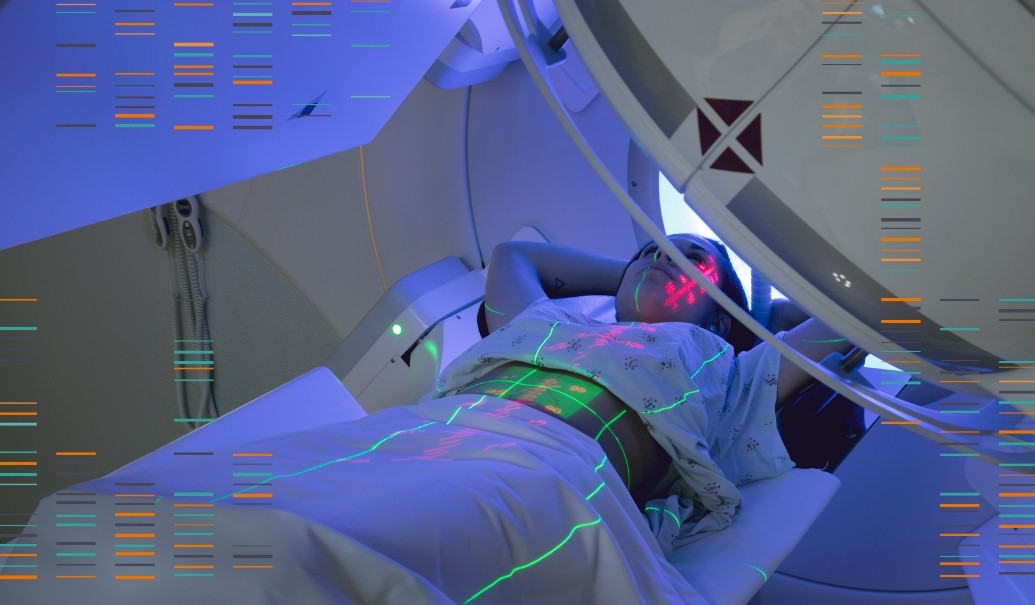Immune checkpoint inhibitor (ICI) therapies like Keytruda, Opdivo, Yervoy, Imfinzi and others have become cornerstones of cancer treatment over the last 10 years due to their potential to deliver deep and durable responses for some patients. “Some patients” is key. A 2020 analysis published in the Journal of the American Medical Association estimated that across ICI-eligible patients, the aggregate response rate for ICI monotherapy is 12.5%. Accordingly, research aiming to improve outcomes using regimens combining ICI therapies with other ICI therapies or non-ICI therapies is extensive, with over 1,000 trials across phases 1 to 3 currently in progress, according to Intelligencia.ai.
Despite building on a well-validated development pathway of blocking programmed cell death protein 1 (anti-PD-1) or programmed cell death ligand 1 (anti-PD-L1), about 60% of pivotal ICI combination trials have failed to date. Research published in 2022 in Cancer Discovery provides a starting hypothesis for these failures. First, the research described the different mechanisms that can provide benefits in combination regimens. One mechanism, synergy, is when the combined effects of more than one treatment are greater than the sum of the individual effects of each treatment. The other mechanism, called additivity, occurs when the combined effects are roughly equal to the sum of the individual effects.
The Cancer Discovery research concluded that for several recent combination therapy approvals, including ICI combinations, additivity was responsible for the incremental benefit of the combination therapy.
This finding, as well as failures of ICI combination trials involving therapies with minimal monotherapy efficacy, inspired our thesis that manufacturers developing ICI combinations should approach the concept of synergy cautiously and consider prioritizing additivity, or ICI combinations wherein each therapy has clear monotherapy efficacy, ideally within the tumor type of the combination trial.
To test this thesis, we analyzed results from pivotal ICI combination trials in two different categories:
- Trials testing the addition of anti-PD-1/anti-PD-L1 therapies to the standard of care (SOC)
- Trials testing the addition of other therapies to anti-PD-1/anti-PD-L1 therapies
We pulled data from ICI combination trials from the Intelligencia.ai database and Biomedtracker, current to April 2023, and analyzed 114 pivotal ICI combination trials. Fifty-eight of those trials were designed to test the addition of anti-PD-1/anti-PD-L1 therapies to the SOC, while 56 were designed to test the addition of other therapies to anti-PD-1/anti-PD-L1 therapies. While there are approved and in-development ICI mechanisms beyond anti-PD-1/anti-PD-L1, anti-PD-1/anti-PD-L1 has by far the largest body of historical evidence, which makes it an excellent testing ground for hypotheses about the potential of ICI combinations.
Outcomes of trials adding anti-PD-1/anti-PD-L1 therapies to the standard of care
Trials testing the addition of anti-PD-1/anti-PD-L1 therapies to the SOC were more likely to succeed than trials testing the addition of other therapies to anti-PD-1/anti-PD-L1 therapies, shown in the upper chart of Figure 1 below. Trials testing the addition of anti-PD-1/anti-PD-L1 therapies to the SOC were not uniformly successful, however. There is a dramatic difference in success rates between trials using an anti-PD-1/anti-PD-L1 approved as a monotherapy within the tumor type of the trial, and trials using an anti-PD-1/anti-PD-L1 not approved as a monotherapy within the tumor type of the trial, also shown in the lower chart of Figure 1.
FIGURE 1: Success rates for different types of pivotal anti-PD-1/anti-PD-L1 combination trials
Of the 22 pivotal trials that used an anti-PD-1/anti-PD-L1 not approved as a monotherapy within the tumor type of the trial that failed, 13 of the failed trials were conducted in tumor types with no monotherapy approvals for anti-PD-1/anti-PD-L1 therapies at all.
The strategy of adding anti-PD-1/anti-PD-L1 therapies (see Figure 2) to the SOC was most successful in non-small cell lung cancer (NSCLC) in which 11 pivotal trails succeeded while five failed, four of which failed due to regulatory feedback or recruitment issues rather than efficacy. Trials adding anti-PD-1/anti-PD-L1 therapies to the SOC for multiple myeloma failed due to tolerability, while head and neck (H&N) and prostate cancers struggle with efficacy.
FIGURE 2: Pivotal trials testing the addition of anti-PD-1/anti-PD-L1 therapies to SOC by tumor type
Outcomes of trials adding other therapies to anti-PD-1/anti-PD-L1 therapies
While pivotal trials testing the addition of other therapies to anti-PD-1/anti-PD-L1 therapies were less likely to succeed in aggregate than pivotal trials testing the addition of anti-PD-1/anti-PD-L1 therapies to the SOC (as shown in Figure 1), different strategies within the category of adding onto anti-PD-1/anti-PD-L1 therapies have demonstrated a range of success.
- Building on evidence of monotherapy efficacy appears to be critical. Of the eight pivotal trials where both the anti-PD-1/anti-PD-L1 and a combination agent were already approved in the tumor, 50% succeeded.
- The success rate dropped to 36% for 11 pivotal trials in which the anti-PD-1/anti-PD-L1 was approved as monotherapy outside the tumor type of the trial instead of within it.
- Similarly, the success rate was 33% in 15 pivotal trials where the therapy combined with the anti-PD-1/anti-PD-L1 was approved in a tumor type other than the tumor type of the combination trial.
- Most importantly, only two out of 22 pivotal trials succeeded in testing a combination with a non-anti-PD-1/anti-PD-L1 that was not already approved as a monotherapy in any tumor type, amounting to a 9% success rate.
The non-anti-PD-1/anti-PD-L1 therapies without prior monotherapy approval are summarized in Figure 3 (download the PDF to see Figure 3). Most therapies in this figure have limited monotherapy efficacy, with the exception of Imjudo and relatlimab, which were tested in the two successful trials in this category. Tiragolumab and bempegaldesleukin have also shown statistically significant benefit as components of combinations with anti-PD-1/anti-PD-L1 therapies in non-pivotal phase 2 trials, despite failing to show statistically significant benefit in pivotal phase 3 trials.
Attempts to build onto approved anti-PD-1/anti-PD-L1 therapies have proven relatively more successful in renal cell carcinoma (RCC), where five pivotal trials have succeeded versus four failures, and hepatocellular carcinoma (HCC), where there were four successful pivotal trials and two failed trials. Comparatively, this strategy has been less successful in NSCLC, H&N, melanoma and bladder cancer as shown in Figure 4 (download the PDF to view Figure 4).
When we examine the strategy of building onto anti-PD-1/anti-PD-L1 therapies by class of therapy, we see that combinations with kinase inhibitors drive most of the success in RCC, and most other successful combination trials across tumor types are, unsurprisingly, with anti-cytotoxic T-lymphocyte-associated antigen 4 (anti-CTLA-4). Many of the failed trials, especially in melanoma, NSCLC and H&N are driven by immuno-oncology (IO) assets in classes other than anti-PD-1/anti-PD-L1 or anti-CTLA-4. These classes intersect with the therapies detailed in Figure 3 (download the PDF to view Figure 3). H&N cancer appears challenging for ICI combination development, as the balance of failed combination trials in H&N cancer are with anti-CTLA-4s.
Synergy and additivity in trials adding other therapies to anti-PD-1s/anti-PD-L1s in ‘immune hot’ cancers
Cancers such as RCC, melanoma, NSCLC and H&N are considered “immune hot,” or T-cell-infiltrated cancers where ICI monotherapy is more likely to be effective than in “immune cold” (not infiltrated, immunosuppressed) cancers. Figure 5 (download PDF to view Figure 5) details trial design parameters and results for pivotal trials adding other therapies to anti-PD-1/anti-PD-L1 treatments within these tumor types. Based on experimental arms, trials have been designated to demonstrate synergy or additivity. Within these immune hot tumor types, pivotal trials pursuing an additive strategy have a 60% success rate (six out of 10) versus 9% (one out of 11) for pivotal trials pursuing a synergy strategy.
How companies developing combinations involving ICIs should proceed
There is still a dramatic unmet need for combinations involving ICIs to deliver deep and durable responses for more patients. Our research points to several guiding principles for developing combinations involving ICIs:
- Choose the right approach for the right tumor type. For example, the strategy of adding to anti-PD-1/anti-PD-L1 to establish a new SOC has been relatively successful in RCC and HCC. By contrast, historically, ICI combinations with platinum doublet chemotherapy have been more successful than not in first-line metastatic NSCLC (in absence of driver mutations), while adding an additional agent to platinum doublet chemotherapy plus anti-PD-1/anti-PD-L1 has not met expectations. This creates a significant hurdle to entry of novel ICIs in first-line metastatic NSCLC, unless the sponsor uses an additive strategy we describe here.
- Build onto anti-PD-1/anti-PD-L1 with therapies with clear monotherapy efficacy. To date, pivotal trials adding a therapy without clear monotherapy efficacy to anti-PD-1/anti-PD-L1 have a 9% success rate. Even pivotal trials for tiragolumab and bempegaldesleukin that were preceded by successful, randomized phase 2 studies have failed. It appears that companies pursuing this strategy need to prioritize “add-on” therapies with clear monotherapy efficacy. In the absence of clear monotherapy efficacy, companies may need to further specialize by biomarker, as we see in ongoing studies for combinations involving anti-TIGIT therapies, or treatment setting, such as with Moderna and Merck’s mRNA-4157 personalized cancer vaccine being tested in adjuvant melanoma. Here, immune surveillance to prevent recurrence appears to be a better fit for a cancer vaccine, as opposed to debulking a primary metastatic cancer.
- Avoid the trap of expecting ICI + ICI synergy. ICI combinations in immune hot tumor types may be more successful if they are designed around the concept of additive efficacy, combining immune checkpoint blockade with addressing other cell surface or intracellular targets not related to immune checkpoints. This was the case with RCC and appears to be the strategy for trials like CARMEN-LC05 (Keytruda + platinum doublet chemo + CEACAM-5-targeting antibody drug conjugate tusamitamab ravtansine) and TROPION-Lung07 (Keytruda + platinum doublet chemo + TROP-2-targeting antibody drug conjugate datopotamab deruxtecan).
Harnessing the immune system to treat cancer holds enormous potential. To succeed in the future, manufacturers will need to adjust their development strategy to consider past successes and failures of pivotal ICI combination trials.
Acknowledgments
We would like to extend a special thanks to our partners at Intelligencia.ai for curating the data set we analyzed in this article.
Add insights to your inbox
We’ll send you content you’ll want to read – and put to use.
















